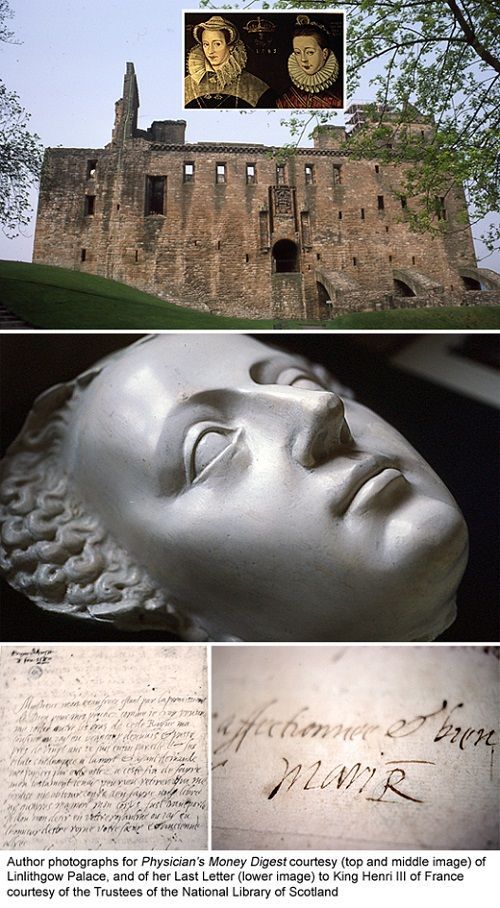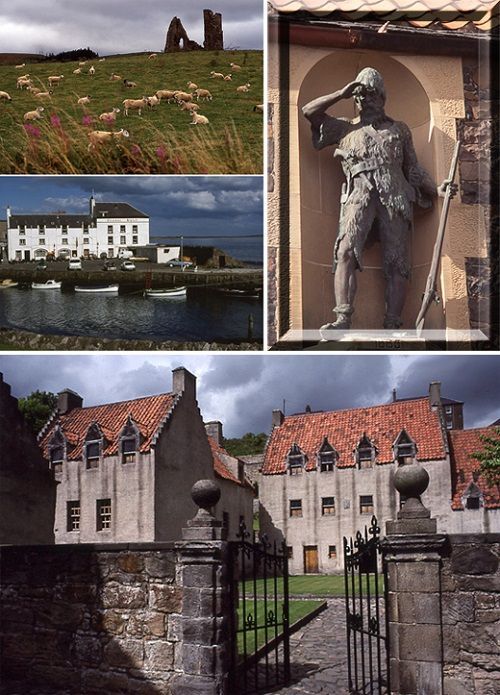Article
Scotland 3: Sightseeing the Southern Surroundings of Edinburgh
Author(s):
The history of Scotland is largely a history of warfare. A summary might be: during the first millennium AD the Scots fought relentlessly with the Romans, the Pagans, and Vikings, then in the next millennium incessantly with the English.
Scotland is a small country — at 78,775 square miles it’s just bigger than Nebraska but with almost 3 times the population of the Cornhusker State. Scotland’s population of 5.3 million, its highest ever, would place it between Colorado and Minnesota if it ever became a state – but that might require the USA to enjoy haggis!
Archaeologists believe Scotland had its birth in the middle of the 6th century. The Irish missionary St. Columba came to Iona in 558 or 563 (accounts vary). His exploits range from introducing a Christianity strong enough to drive out the Vikings to legends that he converted the Picts by fighting a “ferocious beast in the depths of the river Ness” that history (or more likely the Scottish Tourist Board) has suggested was the Loch Ness Monster. So Scotland has a long history of fame although its most recent 15 minutes was when the possibility arose in 2014 that it might leave the United Kingdom. Fortunately wisdom prevailed.
One problem for Americans exploring Scotland (apart for driving on the wrong side of the road) is that its history needs to be simplified or it will lose its tourists with heads spinning, A summary might be: during the first millennium AD the Scots fought relentlessly with the Romans, the Pagans, and Vikings, then in the next millennium incessantly with the English. So Scotland’s past really is that of war including national wars against a monarchy that some Scots did not want or a war against a religion that some did not care for.
Perhaps the only times that might interest most tourists would be the 1500s to the 1800s and especially the transitions, including the transfer of power in 1603, when the King of Scotland, James VI, awkwardly succeeded the Queen of England, Elizabeth I, who had executed his mother, Mary, Queen of Scots, in 1587; as well as the transition in the year 1707 when finally the countries had the same Parliament in the Act of Union.
You will find tragic evidence of Mary, Queen of Scots everywhere you go in Scotland. Locations bear confirmations of her presence just as our towns in the United States claim George Washington slept here.

A mere 11 miles west of Edinburgh airport stands Linlithgow Palace where Mary was born in 1542. The palace is now a ruin but the first floor has artifacts including Mary’s death mask. (Insert top): the painting of Mary and her son James (both pawns of the Scottish aristocracy, on display in Blair Castle) is contrived. She never saw her son again after the age of 10 months! Brought up in Catholic France before ascending the Scottish throne, she wrote to her cousin King Henri III a few hours before her execution in England. The letter was misplaced after the French Revolution but bought by a Scottish benefactor in a private auction for the National Library of Scotland.
Edinburgh is in Mid Lothian, the center of Scotland. With a car you can go off in any direction, for example, a bit south into “the Borders” for Rosslyn Chapel or west on to Glasgow or down the south west coast to Ayrshire where was born the poet Robert Burns.

Rosslyn Chapel is a small, private sanctuary visited by tourists and historians because of an architectural wonder, its Apprentice‘s Pillar whose beauty so confounded and enraged the master mason building the chapel that he killed his young apprentice. Dan Brown featured the Chapel imaginatively in his book The Da Vinci Code. Images: Top, a Middle Ages stone in the Basement shows Death pursuing his victims. Next the straight pillar created by the Master Mason, then other carvings then Lower Images: the Apprentice’s Pillar with its unusual and beautiful torsion.

Glasgow, the largest city in Scotland with a population of 596,000, lies 19 miles upriver from its estuary on the Clyde, the river that allowed it to become the famed center of Scottish shipbuilding. Author’s image: A Surgeon Treating a Patient’s Foot by David Terniers, The Younger, courtesy Glasgow Art Gallery & Museum. Middle image: The Burrell Collection in a park 4 miles southwest of downtown was a gift to the city from collectors Sir William and Lady Burrell in 1944. It took 39 years for the city to create a building worthy of it and a postal strike enough time for the architect to mail his winning application competition in the national competition. Glasgow had a hospital way back in 1471. It is now a museum and you can visit it with a Viator tour.

Robert Burns was born in 1759 in this simple clay and thatch cottage that his father had built two years before. Burns is seen by the world as the simple ploughman poet and has enjoyed much popularity in Russia for that reason but he was actually well educated and worked for seven years as a Customs official which is why he carried two pistols. The cottage, now part of a larger Burns museum complex, has survived two and a half centuries including an attempt to be set on fire by Suffragettes (presumably because the handsome poet was a notorious womanize.)

Scotland’s most prolific writer Sir Walter Scott loved the Borders (Southern part of Scotland that bordered England) where a grandfather had a farm. His other grandfather was the professor of Medicine at Edinburgh University. He built his home on the bank of the River Tweed. He called it Abbotsford. One wing of the palatial home is now an upscale Hotel/B & B available for groups. Fourteen miles away stands Peebles Hydro, a delightful and beloved old-world resort (bottom image).

A drive through the Borders shows it is sheep country and explains why the towns have so many woolen stores. It also reveals the ruins of all those abbeys that once flourished in this land often invaded in the wars between the 2 countries. If you have time when you return north to Edinburgh to take the bridge over the river Forth — it will give you easy access to the next county, the so-called “Kingdom of Fife.” This is a county of coastal fishing villages such as Lower Largo with the statue embedded in a wall of the local worthy, Alexander Selkirk, who became the original for Daniel Defoe’s famous Robinson Crusoe. The Internet carries stories about this adventurer who was born here in 1676 but most accounts are muddled. Smithsonian Magazine has the facts in a detailed account here that is worth reading. (Lower image): the Fife town of Culross (pronounced Kew-ross) is a living 16th century village unchanged for five centuries. Although it is fun for a tourist to visit, the real experience is to walk through a village where people really live and work. They don’t wear period costumes… instead they look like you and me and dress like us but inhabit a place that time has forgotten.
Edinburgh airport is 15 miles away. With all of today’s “pleasures” in air travel that proximity. sure makes a difference.
Photography by the authors
The Andersons, who live in San Diego, are the resident travel & cruise columnists for Physician's Money Digest. Nancy is a former nursing educator, Eric a retired MD. The one-time president of the New Hampshire Academy of Family Physicians, Eric is the only physician in the Society of American Travel Writers. He has also written 54 books, the last called The Man Who Cried Orange: Stories from a Doctor's Life.




